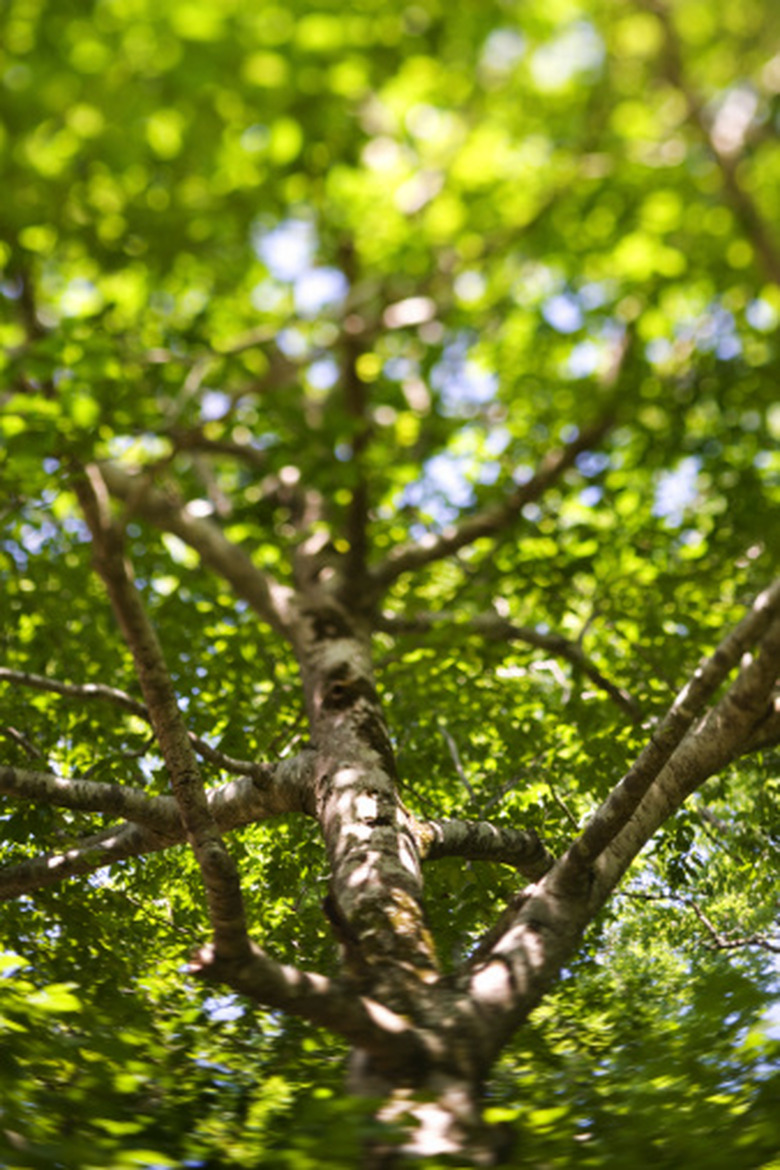What Causes Tree Leaves To Droop?
Drooping leaves on a tree warrant concern, especially since you invested time and effort on its establishment. Because leaves are usually the first places symptoms of stress appear, inspect the foliage frequently during the growing season to ensure your tree is healthy and vigorous. Ideally, medium- to deep-green green, straight leaves are signs of a healthy tree, so determine the cause behind wilting or drooping leaves and take steps to rectify the problem immediately.
Irrigation
Improper watering practices cause the leaves of a tree to droop and wilt. Under watering the tree, especially during the summer when the soil dries out sooner, causes dehydration that manifests itself as yellowing, drooping and wilting leaves. In extreme cases, the tree drops older foliage in an attempt to conserve moisture reserves for younger leaves. Conversely, over watering the soil prevents the roots from absorbing oxygen and transporting it to different parts, thus causing the leaves to droop. Grow the tree in well-draining soil and irrigate the soil over its root zone one to two times a week, depending on its requirement. Reduce the frequency of irrigation when the tree becomes dormant.
- Drooping leaves on a tree warrant concern, especially since you invested time and effort on its establishment.
- Ideally, medium- to deep-green green, straight leaves are signs of a healthy tree, so determine the cause behind wilting or drooping leaves and take steps to rectify the problem immediately.
Pests
Pests including spider mites and aphids cause the foliage on a tree to droop and wilt. The damaging pests sap essential juices from the leaves with their sucking mouthparts, depleting reserves that cause drooping. The insects frequently carry bacterial diseases to the tree, thus weakening them even more and making them susceptible to other problems. Inspect the foliage for signs of pests and dislodge with a spray of water from a hose, or rub a cloth soaked in rubbing alcohol over infestations. Adopt good cultural practices to prevent the tree from becoming susceptible to the pests in the first place.
Disease
Landscape and potted trees are susceptible to a number of fungal and bacterial diseases that affect different parts, including the foliage, wood and flowers. Fungal diseases, such as vascular and Verticillium wilts and leaf spots, cause drooping leaves and damaged woods. Prune infected parts of the tree with sterilized pruning equipment and discard clippings to control spread. Treat infected parts with a registered fungicide. In case of severe damage, a homeowner has no choice but to cut the tree and remove it.
- Pests including spider mites and aphids cause the foliage on a tree to droop and wilt.
- The insects frequently carry bacterial diseases to the tree, thus weakening them even more and making them susceptible to other problems.
Other Factors
The leaves of trees exposed to direct sunlight may droop during the summer, especially if soil moisture is insufficient. Potted trees require repotting to keep the roots from becoming pot bound. The roots of pot-bound trees fail to absorb moisture, causing the leaves to droop and plant to appear stunted. Excessive fertilizer causes the foliage to appear yellow and droop. Follow label directions for feeding your tree a high-nitrogen fertilizer to prevent over feeding it.
